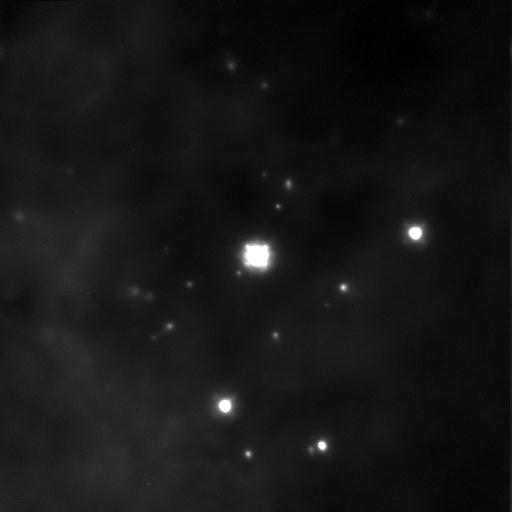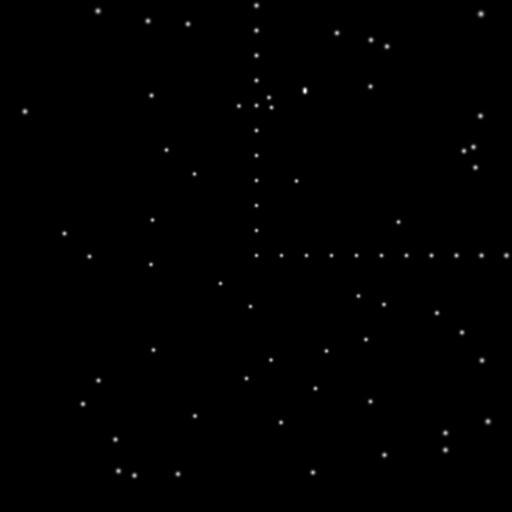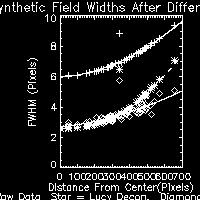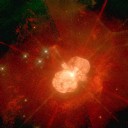Image Processing for Adaptive Optic SystemS
Image Processing Methods for Adaptive Optic Systems
Douglas G. Currie, Petras V. Avizonis
Astro-Metrology Group, Dept. of Physics
University of Maryland at College Park
The Astro-Metrology Group at the University of Maryland at College Park
is currently researching the problem of generating improvements in
images recorded using the already much improved Adaptive Optic telescope
systems such as the Starfire Optical Range (SOR) [Fugate] and the
European Space Observatory [Hubin].
The challenge:
adaptive telescopes compensate for
atmospheric distortion effectively for objects that lie within the
system's isoplanatic patch. For objects that lie within the field of
veiw, but outside the isoplanatic patch, the Point Spread Function for
the image becomes dependant upon the distance from the guide star. In
this situation, it becomes diffeicult to use deconvolution methods to
increase the image resolution due to this divergence of the PSF. Below
are two images, the first is one which shows an image of Trapezium as
seen by the SOR system at Phillips Labs, Albuquerque [Image courtesy of
Bob Fugate]. The second image shows the distribution of star widths as
a funciton of distance away from the guide star.

 What we see in the second figure is that the widths of the stars
clearly diverge from that of the guide star (at the center), which
implies that deconvolution of the FOV using the guide star as the PSF
will not yield good results at the edge of the image since the PSF is
not valid there.
What we see in the second figure is that the widths of the stars
clearly diverge from that of the guide star (at the center), which
implies that deconvolution of the FOV using the guide star as the PSF
will not yield good results at the edge of the image since the PSF is
not valid there.
Our Approach:
currently we are working with a synthetic field which has quadratic broadening
of the stars as they are seen farther from the center of the FOV.
 Our approach is simple, that is to attempt to remove the broadening
of the stars in the FOV, then deconvolve, then re-insert the broadening
to retain the original scales of the image. A preliminary attempt at
this yielded promising results, as shown in the figure below.
Our approach is simple, that is to attempt to remove the broadening
of the stars in the FOV, then deconvolve, then re-insert the broadening
to retain the original scales of the image. A preliminary attempt at
this yielded promising results, as shown in the figure below.
 What we see in this result, is the + data points represent the
actual widths, which we note are broadened quadratically. The * points
are the measured widths after deconvolving the entire image with the
central star, or the guide star. Clearly, the improvements in widths
using a straight deconvolution are not as good at the edges of the FOV
as they are near the center. The diamonds, on the other hand, represent
the results of our Warped-Lucy Deconvolution, and it is clear that the
improvements (roughly a factor of 2) in widths are uniform across the
entire field, not only near the guide star. The scatter of the
Warped-Lucy data points is due to shearing effects in our current
procedure of removal of broadening.
What we see in this result, is the + data points represent the
actual widths, which we note are broadened quadratically. The * points
are the measured widths after deconvolving the entire image with the
central star, or the guide star. Clearly, the improvements in widths
using a straight deconvolution are not as good at the edges of the FOV
as they are near the center. The diamonds, on the other hand, represent
the results of our Warped-Lucy Deconvolution, and it is clear that the
improvements (roughly a factor of 2) in widths are uniform across the
entire field, not only near the guide star. The scatter of the
Warped-Lucy data points is due to shearing effects in our current
procedure of removal of broadening.
The Future:
work is currently underway to reduce the shearing effects of our
current procedure, then plans are to apply the procedure to the T44/SOR
image at the top of this page (as well as other fields obtained by AO
systems). Our main interest in performing these improvements is in
order to process extended objects which have very fine spatial features
such as the plasma clouds near the core of Eta Carinae, but we have
determined that the best scenes to develop these tools are clusters of
stars since they better show the strengths and weaknesses of various
algorithms and selected parameters.
Please excuse any components of this page that do not work yet - it's all still evolving.
 Return to Astro-Metrology Homepage
Return to Astro-Metrology Homepage






 Return to Astro-Metrology Homepage
Return to Astro-Metrology Homepage